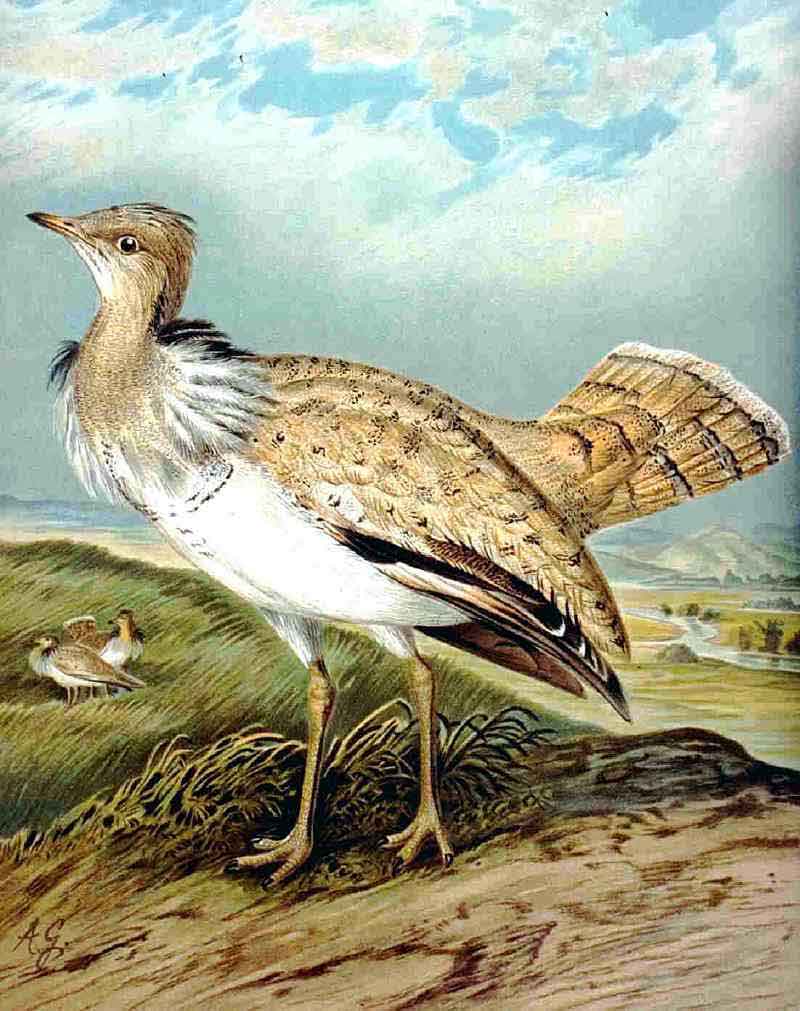Houbara Bustard (Chlamydotis undulata) - Wiki Houbara Bustard
From Wikipedia, the free encyclopedia
Order: Gruiformes
Family: Otididae
[Photo] Houbara Bustard (Chlamydotis undulata). Source: Naumann, Naturgeschichte der V??gel Mitteleuropas, Band VII, Tafel 7. Gera, 1899. (http://www.biologie.uni-hamburg.de/b-online/birds/1617_56.jpg)
The Houbara Bustard, Chlamydotis undulata, is a large bird in the bustard family. It breeds in the Canary Islands and north Africa and Pakistan. The Asian former subspecies has now been split as a separate species, Macqueen's Bustard, Chlamydotis macqueenii. These are the only members of the Chlamydotis genus.
The word houbara derives from Arabic ??????????.
The dividing line between the two species is the Sinai peninsula. The Houbara Bustard is largely resident in its range.
This species breeds in deserts and other very arid sandy areas.
The Houbara Bustard is 60 cm long with an 140 cm wingspan. It is brown above and white below, with a black stripe down the sides of its neck. In flight, the long wings show large areas of black and brown on the flight feathers. It is slightly smaller and darker than Macqueen's Bustard.
Sexes are similar, but the female is smaller and grayer above. It is vocally almost silent.
Like other bustards, this species has a flamboyant display raising the white feathers of the head and throat and withdrawing the head. 2-4 eggs are laid on the ground.
This species is omnivorous, taking seeds, insects and other small creatures.
The Houbara Bustard is widely prized in Arabia and Pakistan for its meat; widespread hunting has almost put it on the endangered list.
http://en.wikipedia.org/wiki/Houbara_Bustard
| The text in this page is based on the copyrighted Wikipedia article shown in above URL. It is used under the GNU Free Documentation License. You may redistribute it, verbatim or modified, providing that you comply with the terms of the GFDL. |
